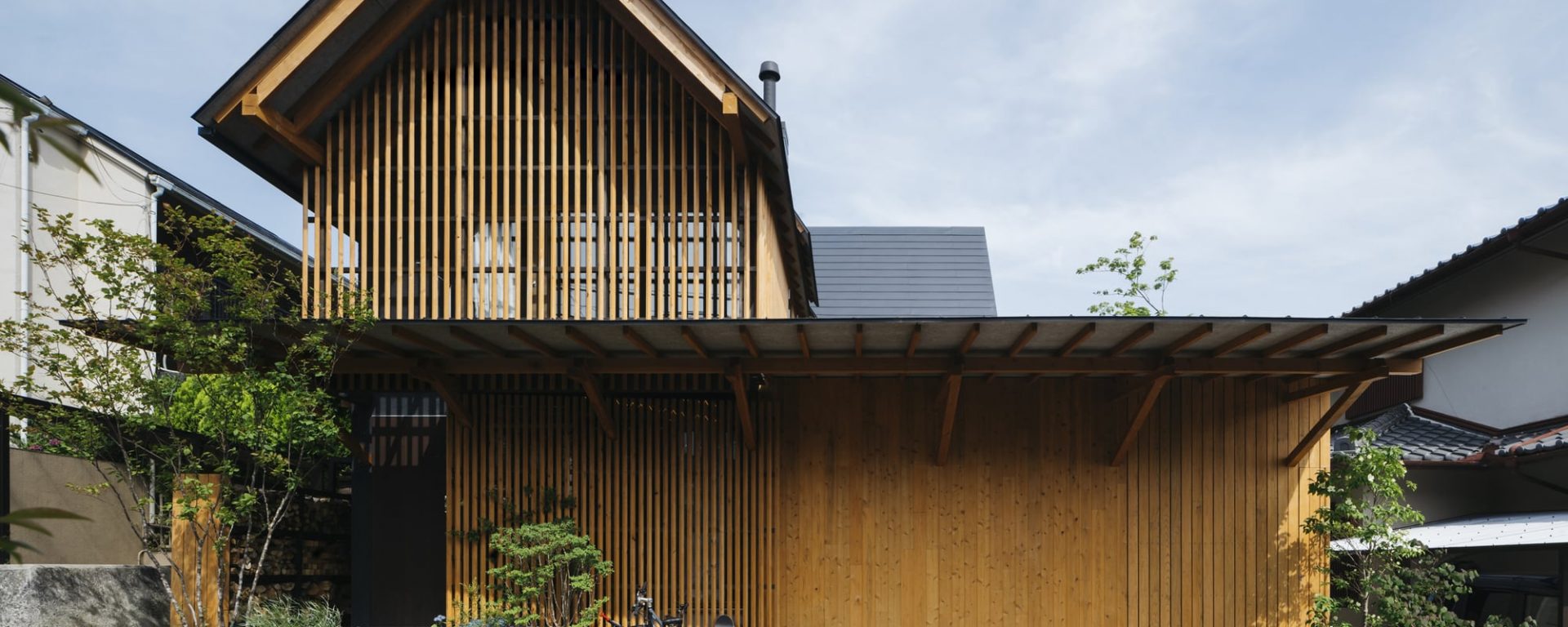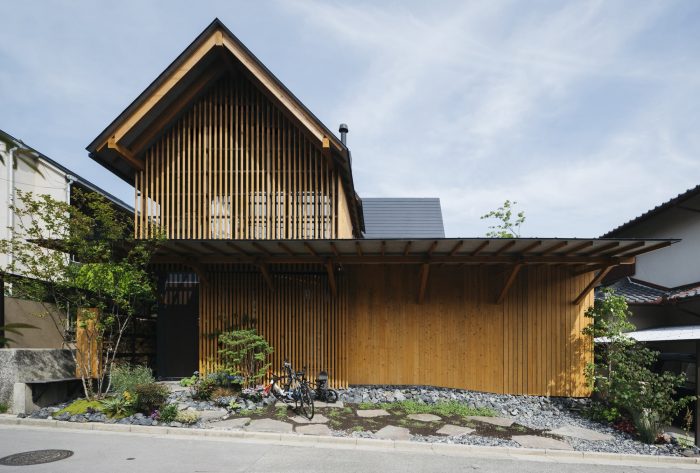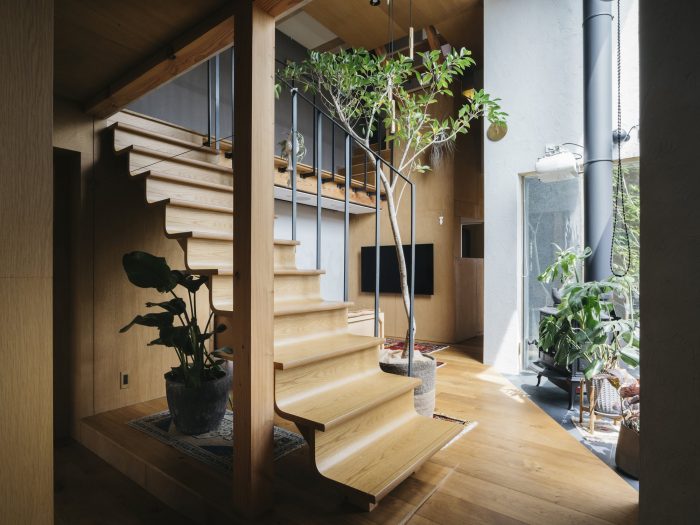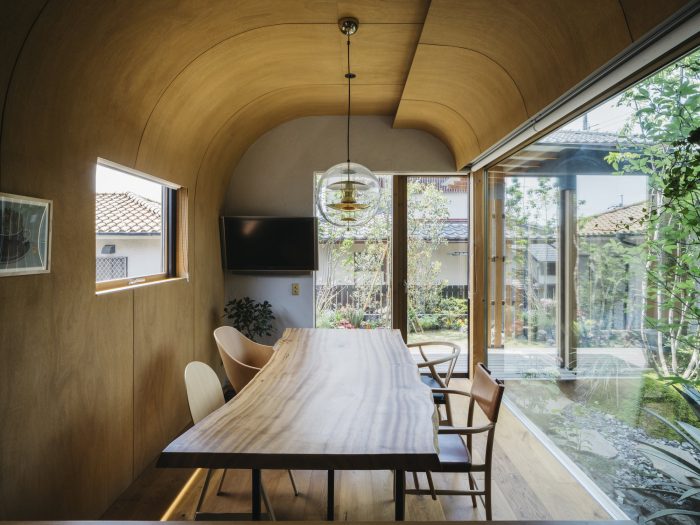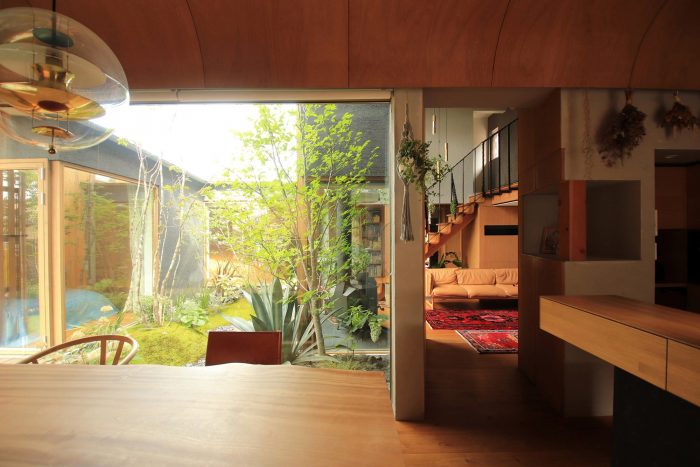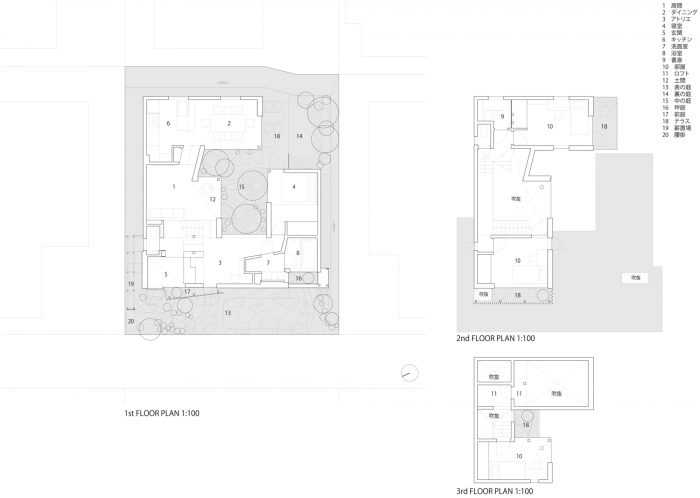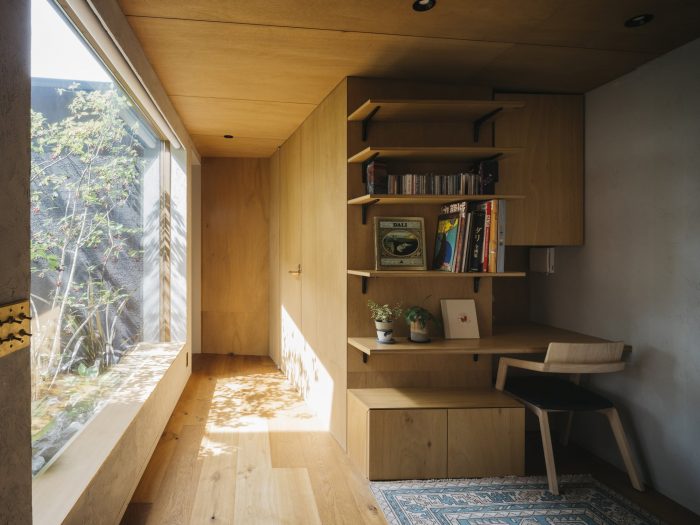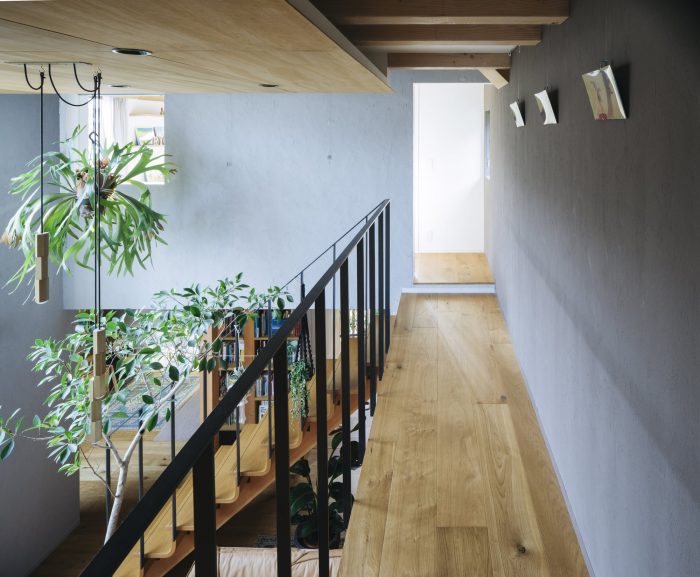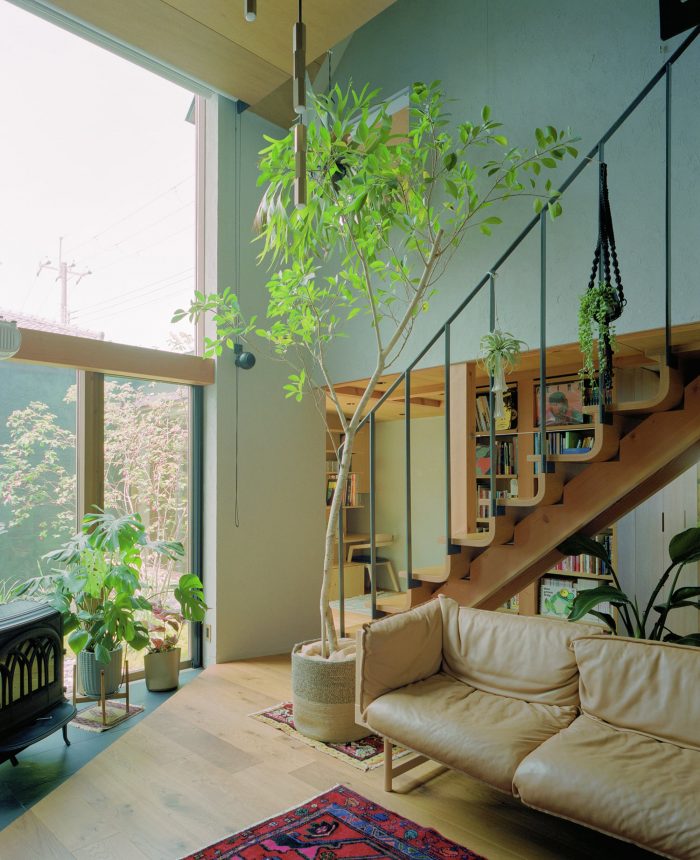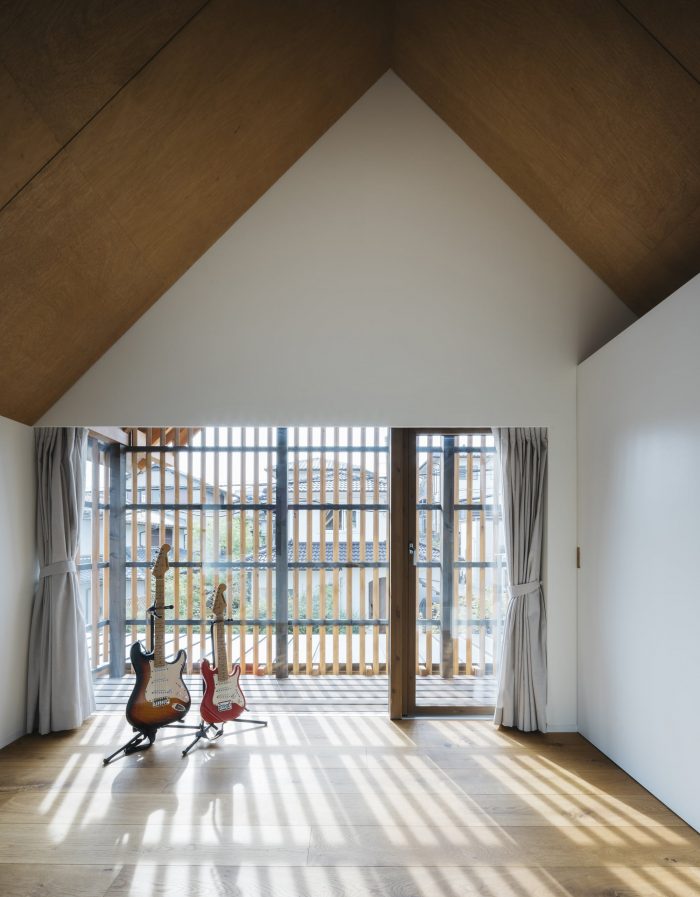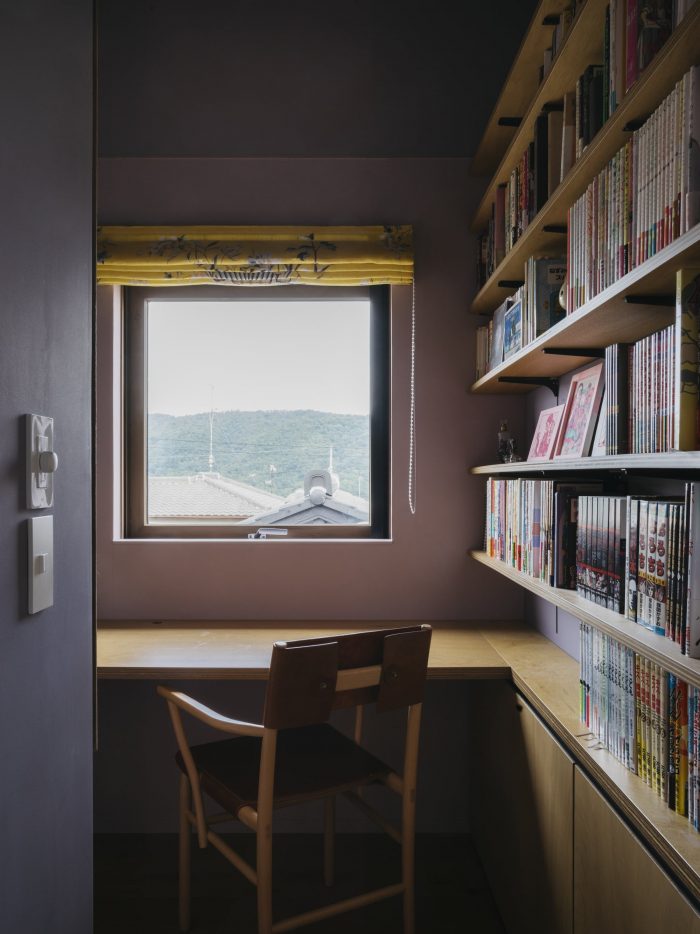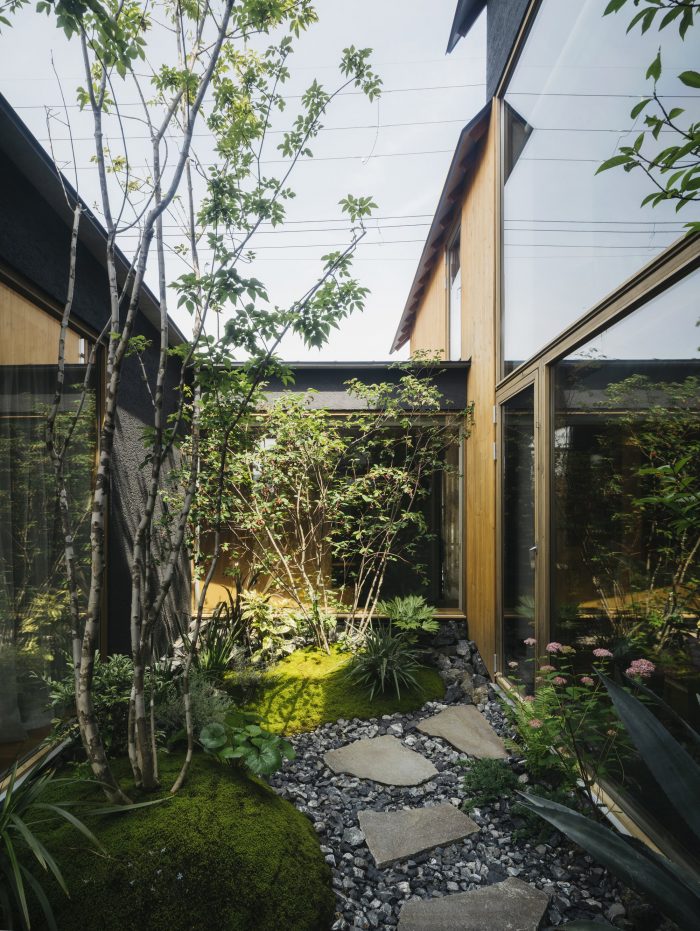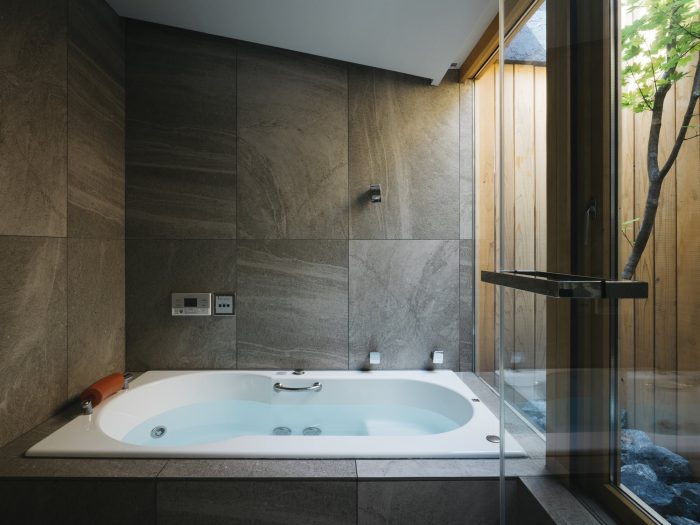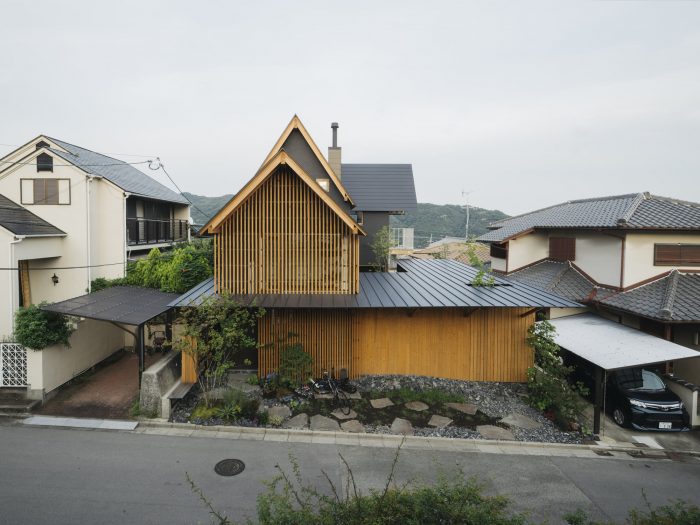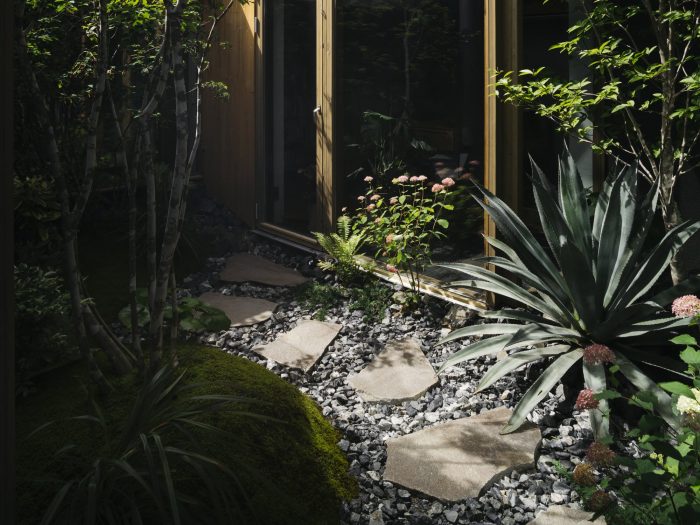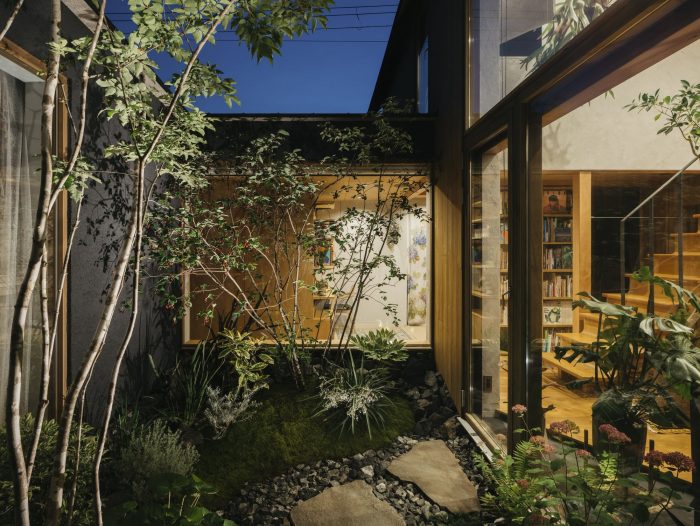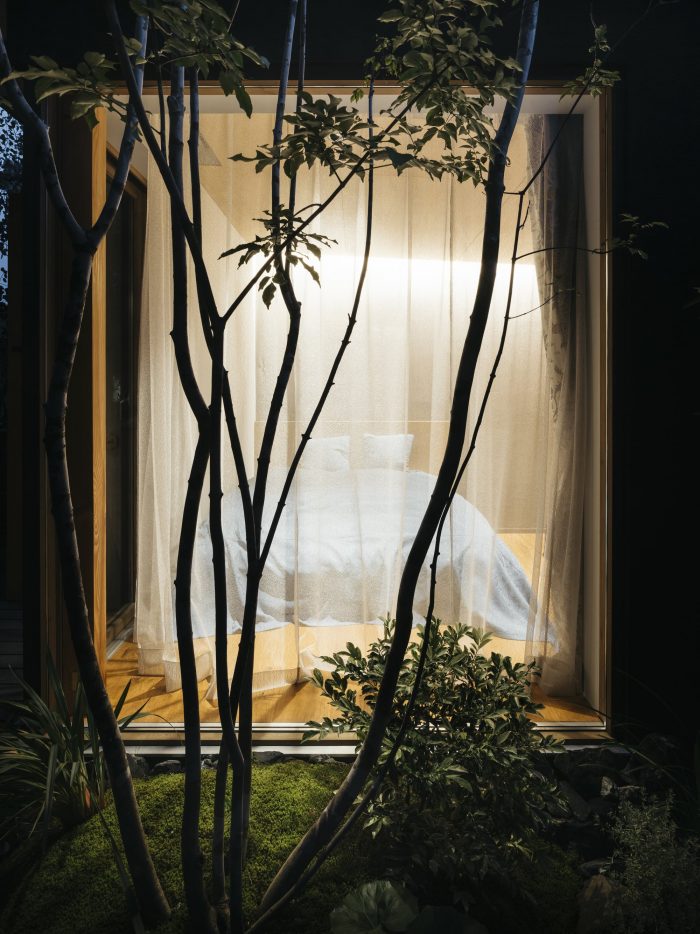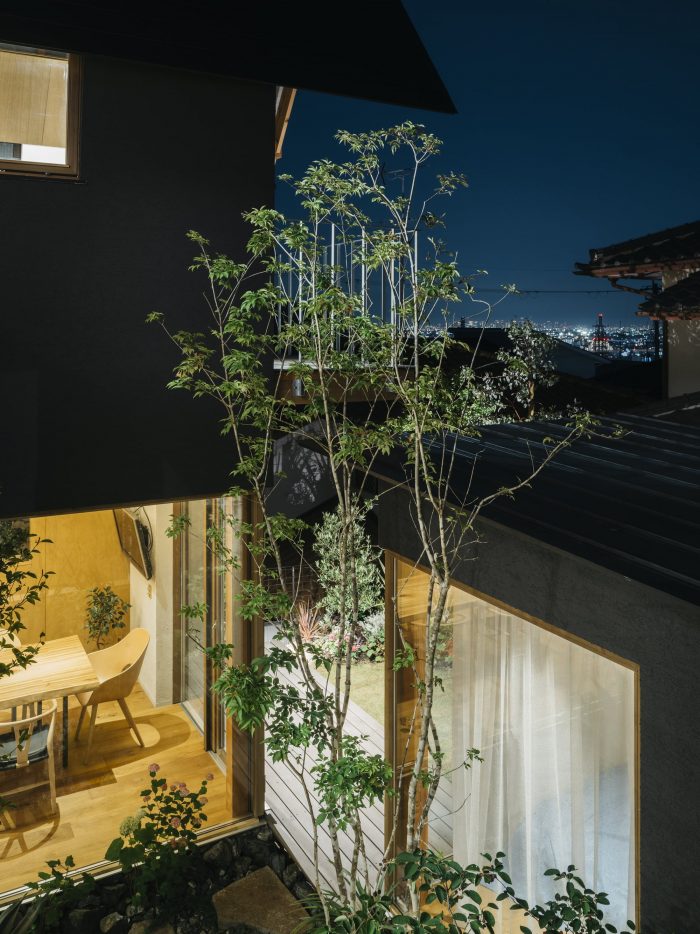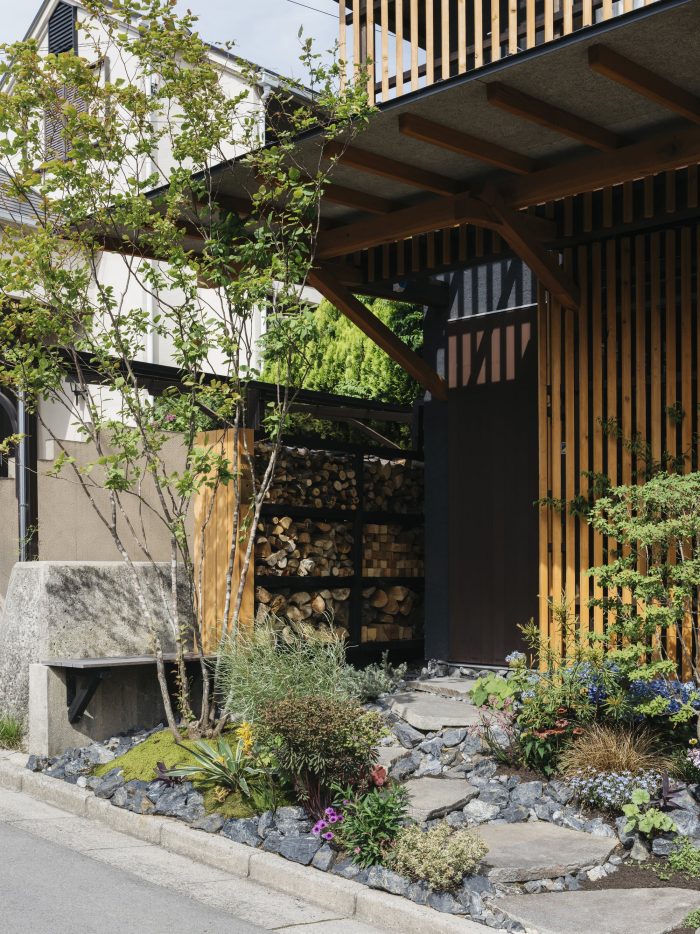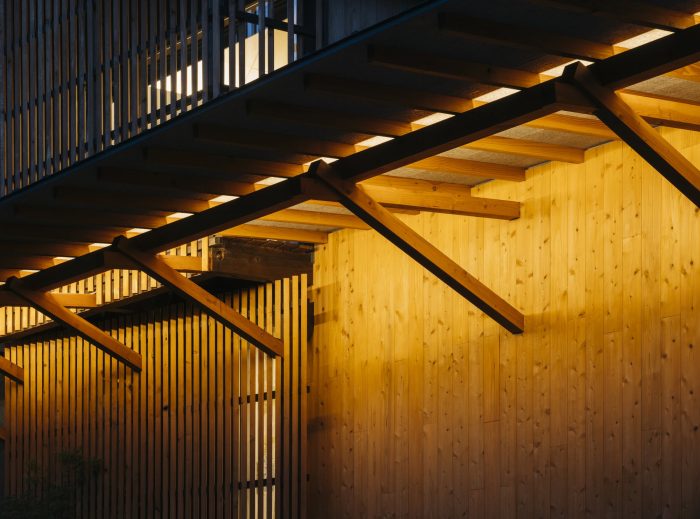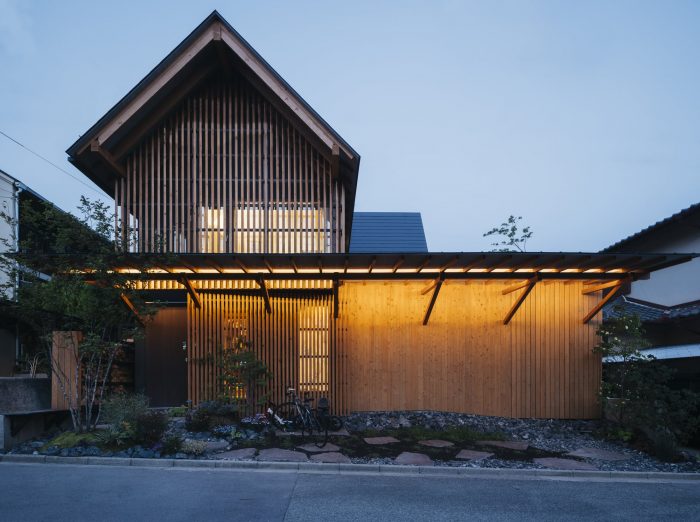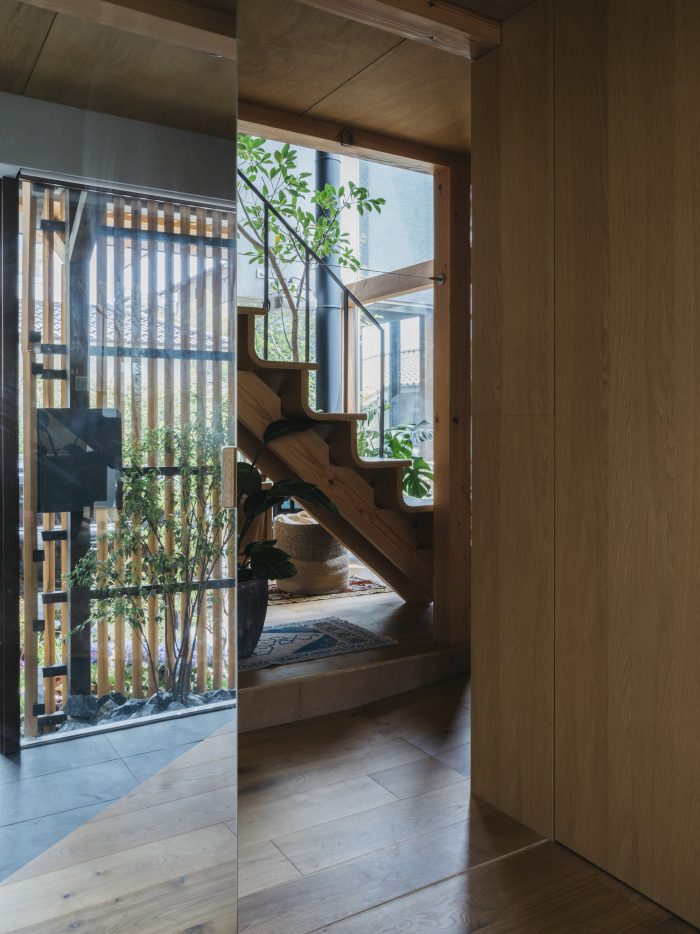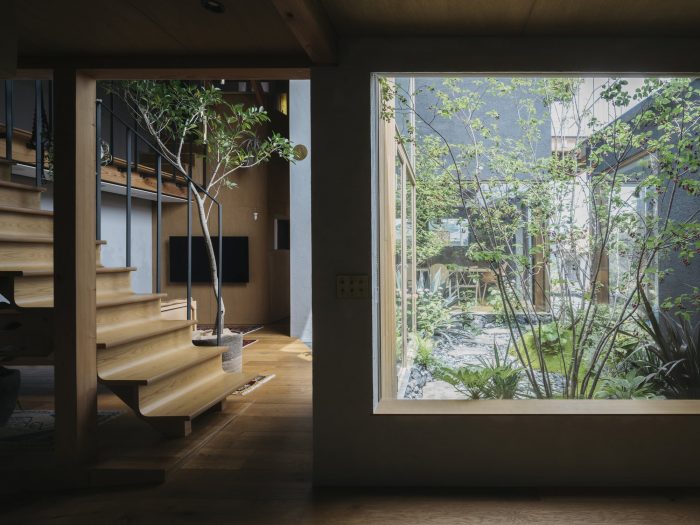通过对房屋的拆解和重组,花园通过塑造很多地方逐渐向环境开放。两个L型被一点点咀嚼,而风在中间摇晃,光在绿色的阴影中摇晃。
By disassembling and reorganizing the house, the garden gradually opens to the environment by shaping a lot of places. Two L-type are chewed a little bit, while the wind shook in between, and the light shook the green shadow.
50年代初开发的郊区,正在被新的活力所取代。这是一座在周围环境中连接两个花园,在内部连接三个花园的房子。
The suburbs, which were developed in the early 1950s, are being replaced by new vitality. It is a house that connects two gardens in a surrounding environment and three gardens inside the interior.
在前面的花园里,邻居的孩子们在那里玩耍,他们做DIY和做柴火。从风吹来的南边花园看去,大阪机场和大阪中心区就在远处。三个花园的内部是一个缓冲区,连接着花园和室内。下方的平屋顶连接着花园。这六个花园逐渐将住宅分割开来,并使家里和外面的环境都很和谐。面向花园的墙将空间分隔开来,诞生了一个多面体花园。
In the front garden, where the neighbors’ children play, they do DIY and make firewood. From the south garden where the wind is blowing, Osaka Airport and Osaka-center section are located far away. The inside of the three gardens is a buffer that connects the garden with the interior. The lower flat roof connects the garden. These six gardens gradually divide the residence and harmonies the environment both at home and outside. The wall facing the garden separates the space and gives birth to a polyhedron garden.
每个位置都有独特的面部表情,并通向住宅的其他地方。花园和客厅在相互交织中,与外界相通。
Each location has a unique facial expression and leads to other places of residence. The garden and the living room are intertwined in the interweaving of each other and is connected to the outside world.
Architects: Atsushi Kawanishi Architects
Area : 130 m²
Year : 2020
Photographs :Katsu Tanaka, Atsushi Kawanishi
Country:Japan

